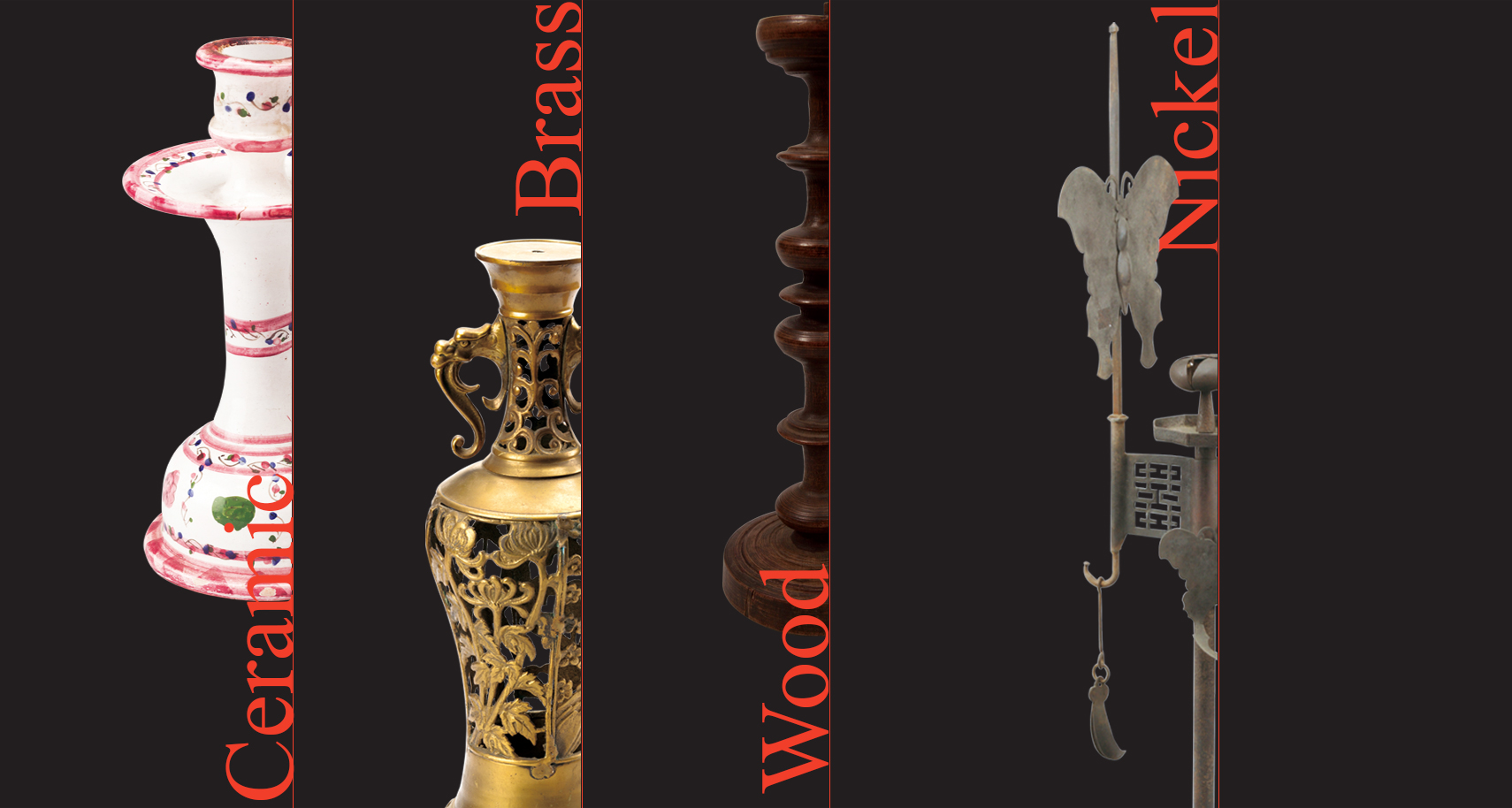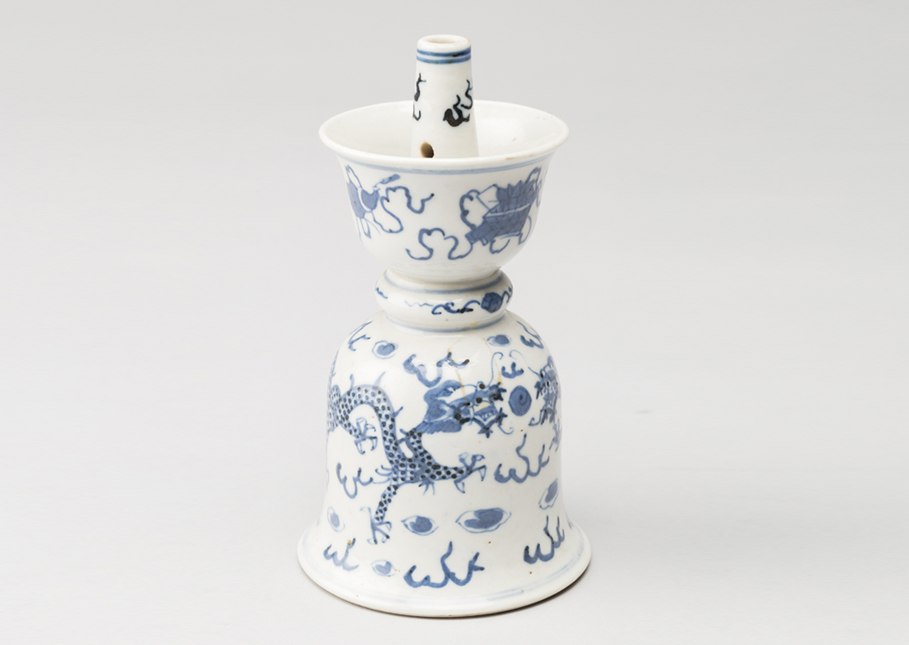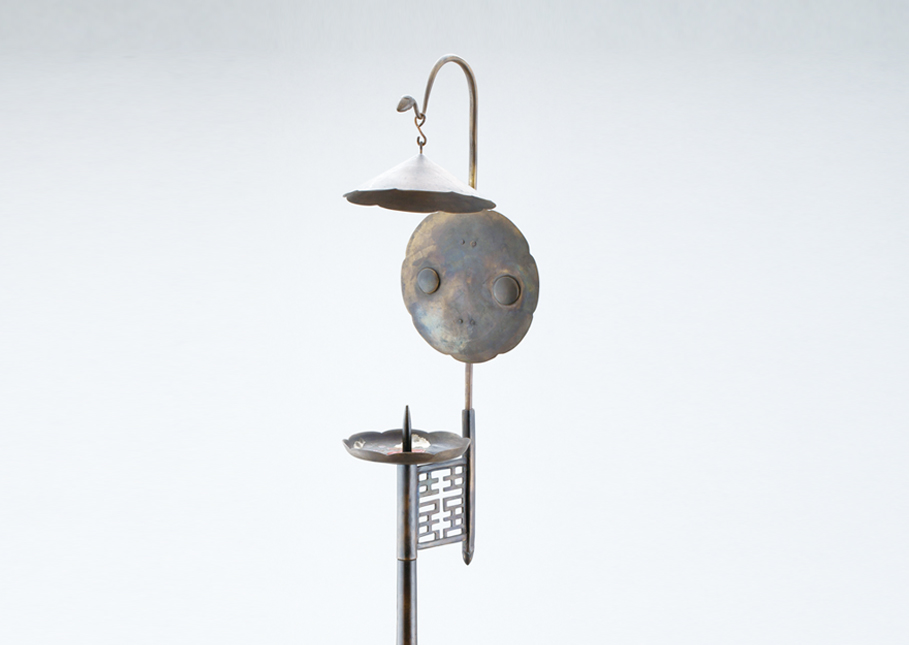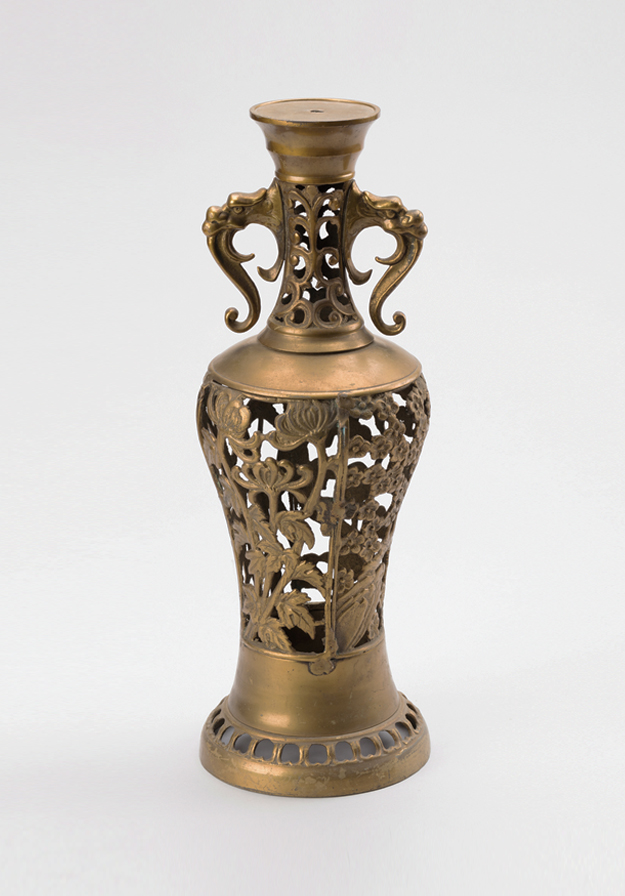December 2021

December 2021
In the days when there was no electricity, the candlestick was a nighttime necessity.
Here are the candlesticks that lit up the night of Koreans.
Written by
Tim Alper,
contributing writer
Photo Courtesy of
National Folk Museum

Nobody knows quite when the candlestick or lantern first appeared on the Korean Peninsula, but the archaeological record provides fascinating insight. The earliest-known candlestick found in digs dates back to the end of the Unified Silla (668-935) period. But a magnificent, 25.5 centimeter pair of what at first glance seems to be a pair of decorative bronze sheers, now housed in the Gyeongju National Museum, tells a different tale.
Historians have identified the item as dating back to the early years of the Unified Silla era. They think it is a set of wick-cutting scissors, designed for trimming wicks on wide candles―the sort that would invariably have been used on broad candlesticks. It is a clue that shows that in Korea, candles, lanterns and candlesticks have a longer history than many may assume.


Coincidentally perhaps, the Unified Silla period saw Buddhism cement itself as the dominant religion on the peninsula. Having arrived in Korea in or around the fourth century CE, the strain of Buddhism that took root in the nation―and is still practiced throughout the land―makes extensive use of lights, candles and candlesticks.
Undoubtedly, Buddhism played a key role in the evolution of the Korean candlestick, but a sea change in faith forced artisans to take a remarkable new direction with their craft. The Goryeo rulers were dramatically overthrown in 1392 by the Joseon monarchs, who quickly marginalized the religion in favor of Confucian values. Asceticism, simplicity, a distrust of superstition and strict family virtues became the order of the day.
And the artisans responded: Whereas candlesticks shaped to resemble curvy Buddhist prayer beads enjoyed popularity during the Goryeo years, they reflected the new philosophy by creating arrow-straight designs made of bamboo. The Joseon thinkers adored bamboo, considering it the natural world’s embodiment of the right-minded values they so prized.
Not only were candlesticks imbued with layers of symbolic meaning, but so too were the candles they held. For instance, one expensive candle favored by the nobility made use of beeswax so fragrant, it gave off a subtle and alluring honey-like aroma when burned. Common folk could expect to experience this just once in a lifetime: Couples would light this candle on their wedding days, to ensure romance quite literally filled the air as they celebrated their official union.
Things changed again toward the end of the Joseon period and into the Japanese Colonial Era (1910-1945), when trading and mining innovations granted craftspeople and householders access to new materials. Whereas old oil lamps made use of expensive oils derived from perilla and sesame seeds, access to crude oil-derived products meant oil lamps became more sophisticated, cheaper to fuel and more powerful. Wooden candlesticks and expensive brassware gave way to iron and even steel pieces.
But the industrialization of Korea that followed the Korean War (1950-1953) almost wiped out the candlestick overnight. The electrical grid soon reached every home in Korea, seemingly rendering the candlestick and lantern obsolete.
Korea quickly became what it is today: a haven of modern technology. But as the old way gave way to a glittering future, the candlestick and lantern found a new home―in the world of craft.
At the heart of this new trend is the master artisan Cho Seung-joon, who has created a large range of pieces that make use of cupronickel, a copper alloy that typically contains nickel and metals like iron and manganese. This alloy became a popular material for some artisans in the late Joseon period, and is still used to make modern coins. But Cho has used the alloy to create stunning, silver-look candlesticks and lampstands, some of which hark back to designs from Korea’s past. Others of which are adorned with decorative owls, flowers and stars.
Splendid items like this are a new gateway to the world of Korean candlesticks and lanterns. What once were essential household items in the pre-electrical era have become ornaments in the homes of people who hope to preserve the charm of yesterday’s Korea.

